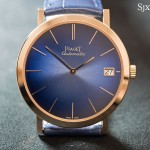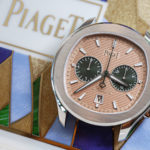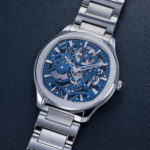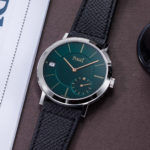Up Close: Piaget Polo 79
A high-quality evolution of the original, but priced high.
In an unsurprising move given recent fads, Piaget just announced the Polo 79, a yellow gold wristwatch that is essentially a remake of the original, with a slightly larger case that captures the proportions of the original and an impressively slim movement.
Initial thoughts
The Polo 79 is a predictable launch, coming shortly after the Vacheron Constantin 222 and IWC Ingenieur, which are of course products of Piaget’s sister companies. The new Polo sticks to the same formula, gently updating the aesthetics and installing a new movement, but largely preserving the same design.
So the Polo 79 can’t be commended for creativity, but it is executed well. That said, creating a new design in the spirit of the original – namely geometric forms, slim, and sporty – would have certainly made it a more interesting watch.
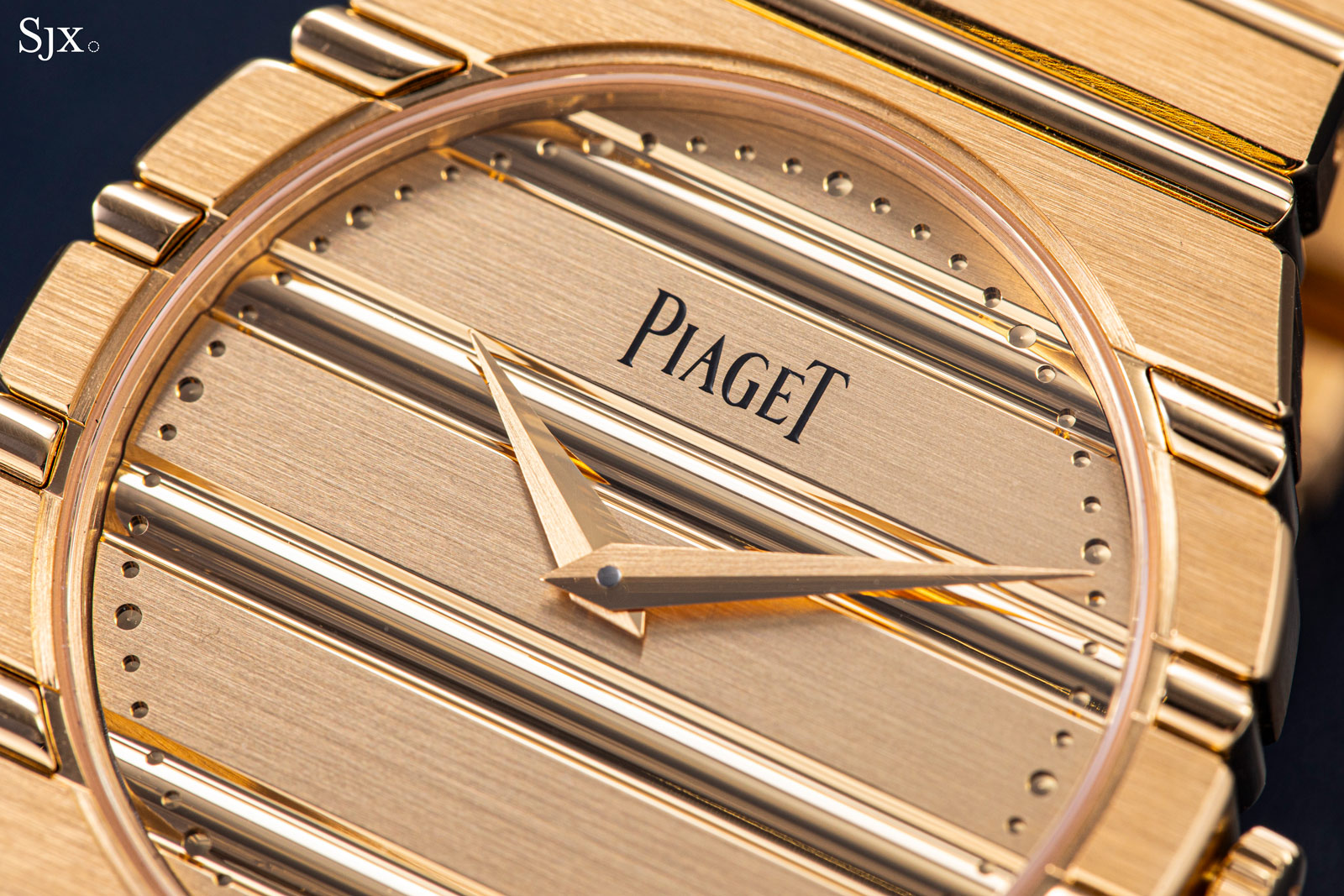
The Polo 79 is slightly larger than the original, but substantially thicker thanks to a self-winding movement. The original, on the other hand, was equipped with the quartz cal. 7P, an incredibly thin movement that fit the trends of the time.
The increase in size means the new Polo feels like a bulked up version of the original, which was small and flat in keeping with 1980s style. To accommodate modern tastes, the Polo 79 sacrifices the thinness of the original. That is regrettable but forgivable, since it would not be possible to achieve sufficient water resistance (the Polo 79 is rated to 50 m) as well as automatic winding in the dimensions of the original case.
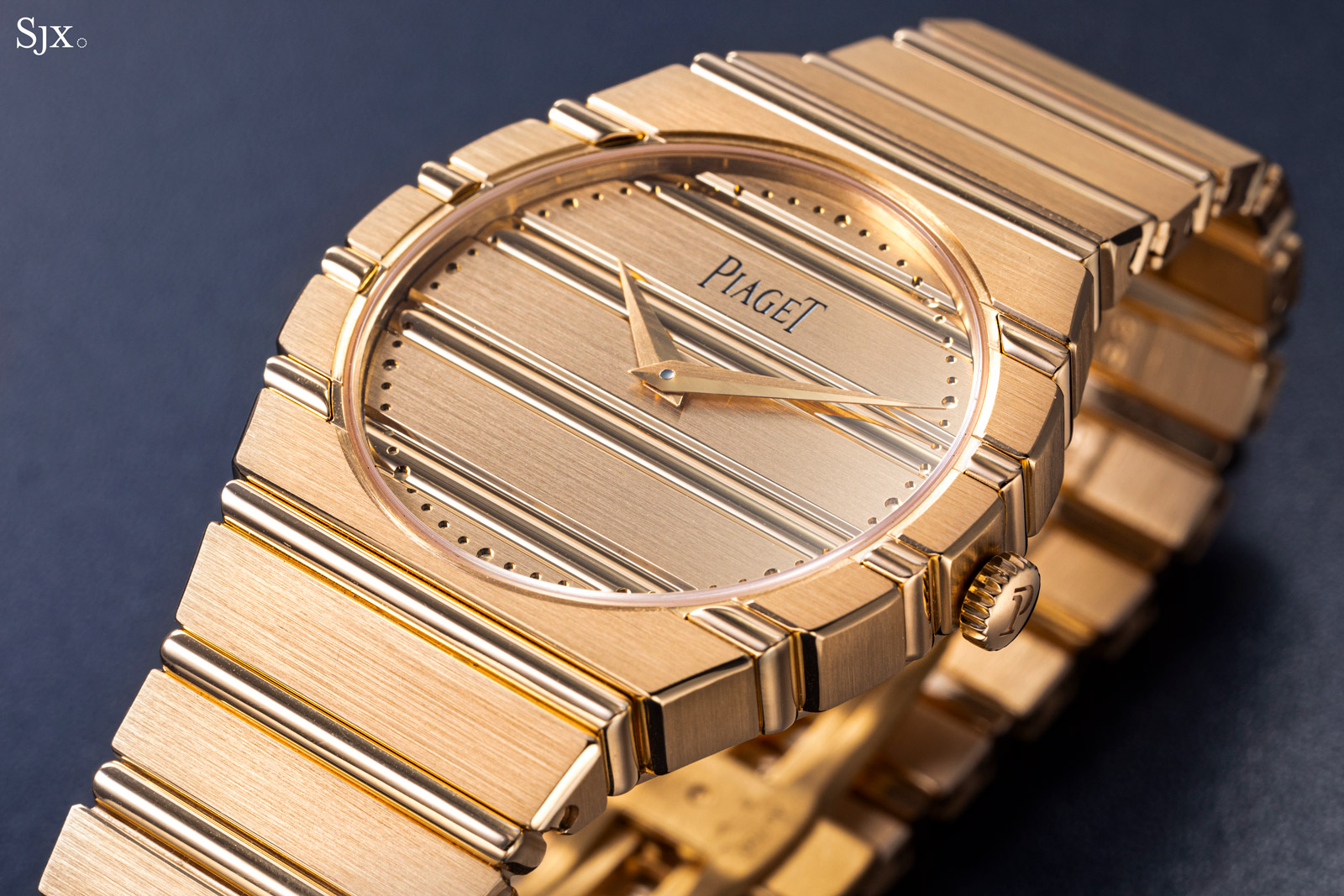
Another notable aspect of the Polo 79 is the case construction. While the case of the original was cast as a single piece, the Polo 79 is comprised of multiple parts, with each polished gadroon being an individual piece that slides into place. This allows for more precise finishing of the case, although it means that the borders between the case and gadroons are visible up close.
Though not creative, the Polo 79 is executed well for the most part. It looks and feels good, with the case feeling comparable to the original, despite being obviously larger. The case is compact enough to have a vintage-ish feel and the thinness gives it an elegant profile.
The slim case is thanks to the extra-flat automatic movement inside that is competently executed, but equipped with an Etachron regulator that is out of place on such a pricey watch.
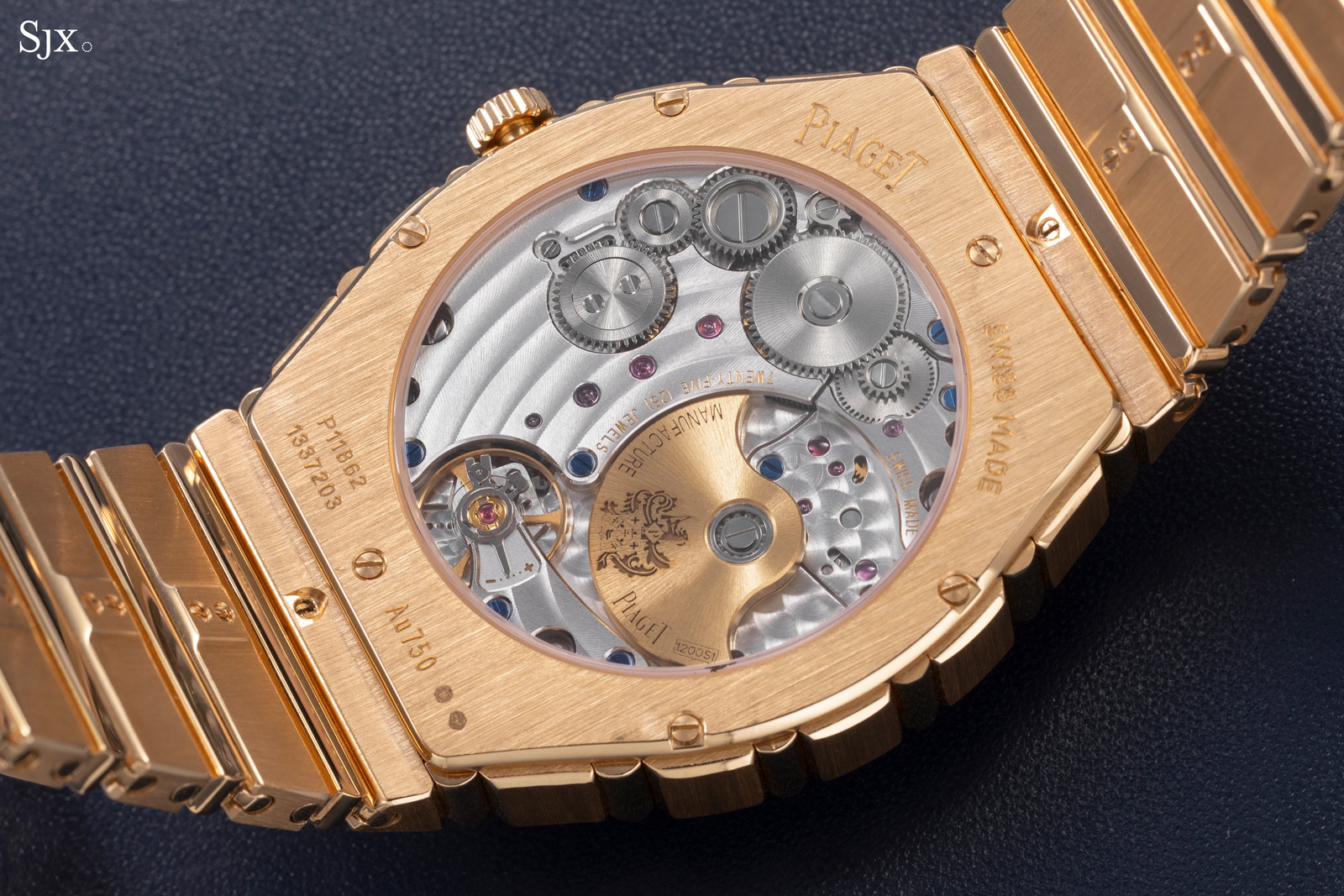
The micro-rotor cal. 1200P1
And it is expensive at CHF68,500, in both relative and absolute terms. The price matters more because the Polo 79 is late, coming after the fad for integrated-bracelet sports watches has started to fade. If it were early, the price wouldn’t really matter because it would have sold well anyway.
It’s only about 5% less expensive than the already-pricey Vacheron Constantin 222, which has a more sophisticated movement as well as haute horlogerie brand equity that Piaget doesn’t have right now.
The comparison to the 222 leads to another point – the seemingly converging strategies of Richemont brands. Launched each a year apart – and arguably too late to solidly capitalise on the integrated-bracelet fad – the Polo 79, 222, and Ingenieur can’t be a coincidence. Whether this group-level supervision of the brands is prudent will only be known in the longer term.
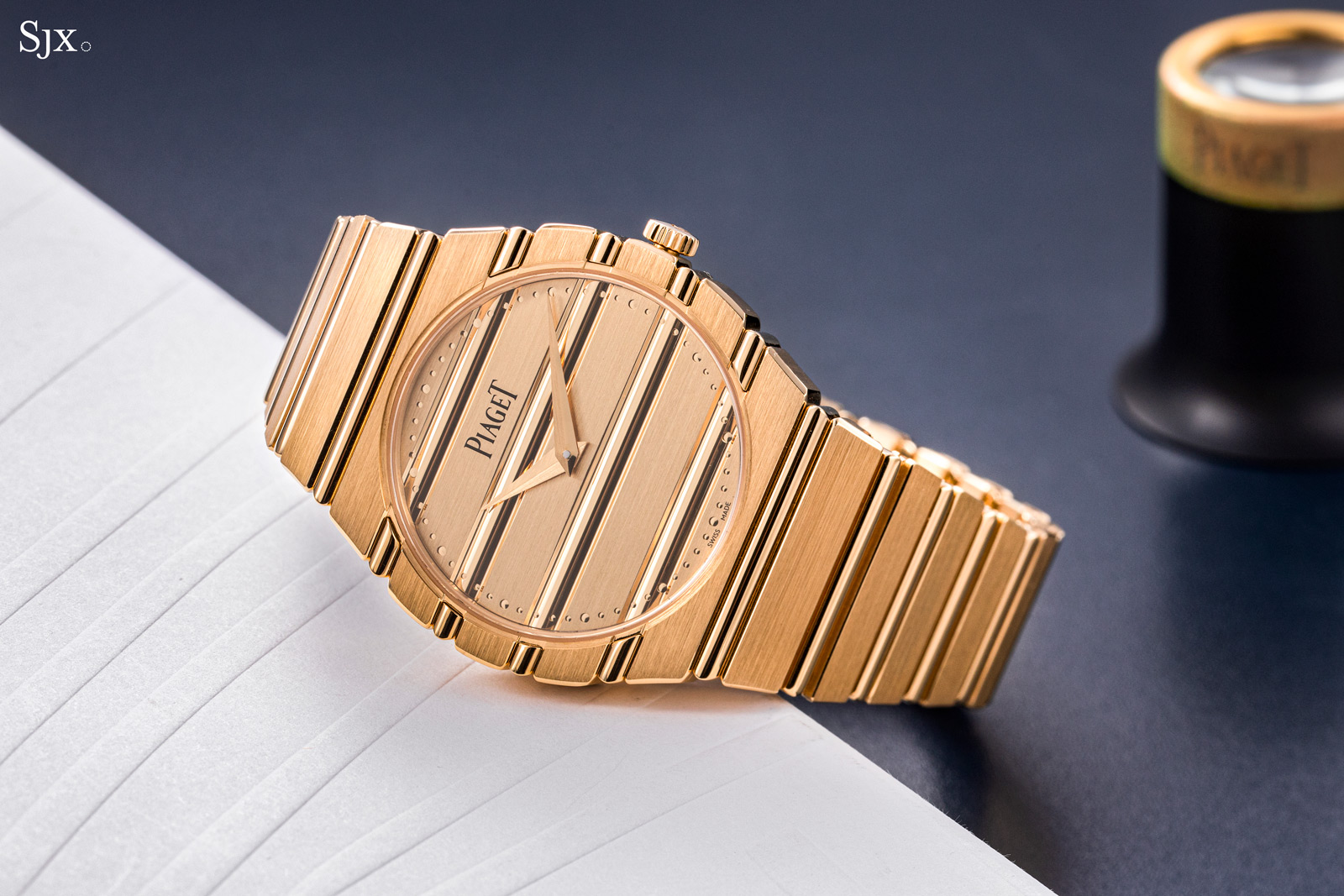
A child of the 1980s
Launched in 1979, during Piaget’s heyday as a maker of ultra-thin and ultra-luxe watches, the original Polo was a success for much 1980s. Piaget iterated the design endless over the subsequent decades, resulting in seemingly countless variants of the model.
The many designs that carry the Polo name has diluted the appeal of the model somewhat, though the original remains a distinctive design that looks very much like an eighties creation but still has appeal.
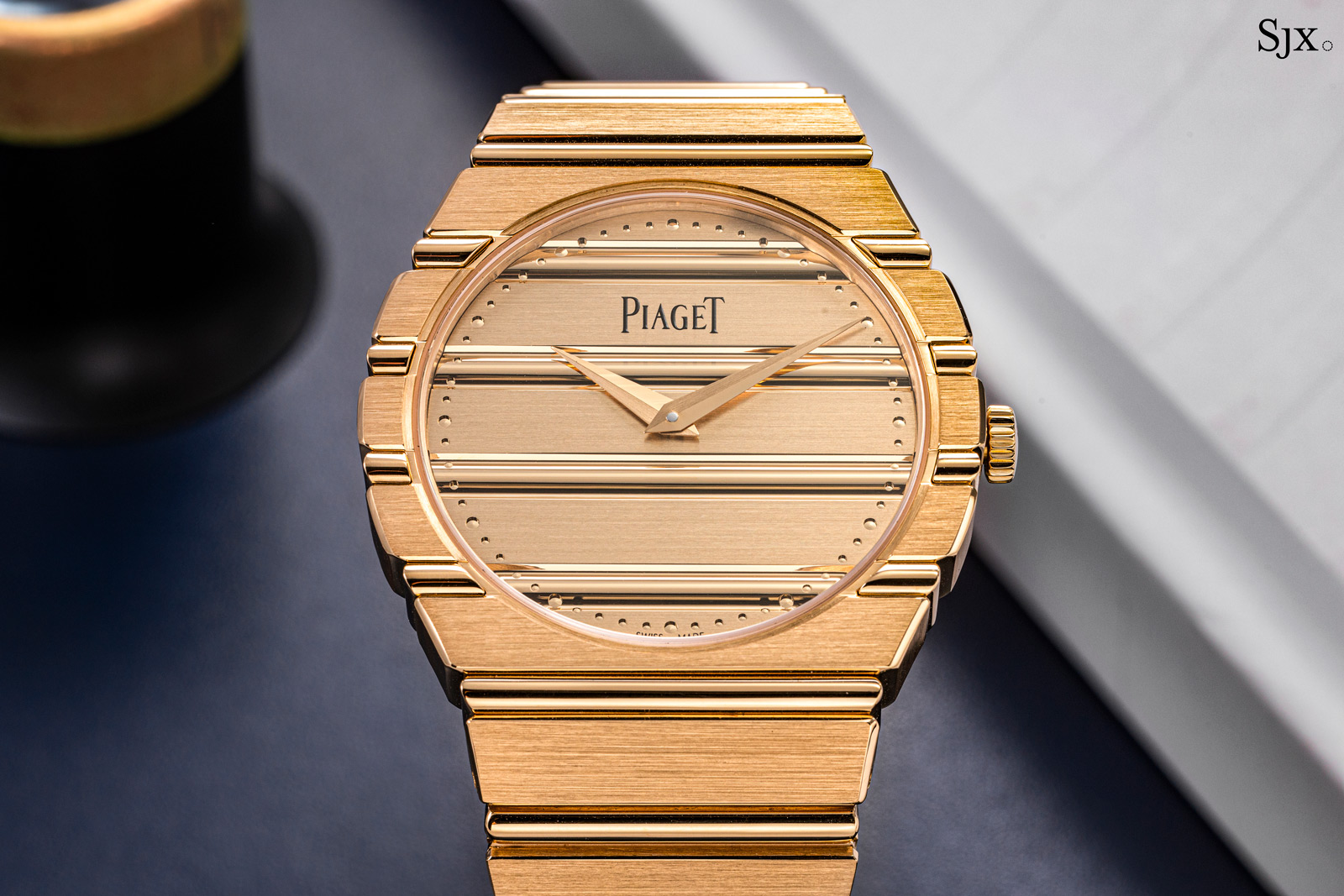
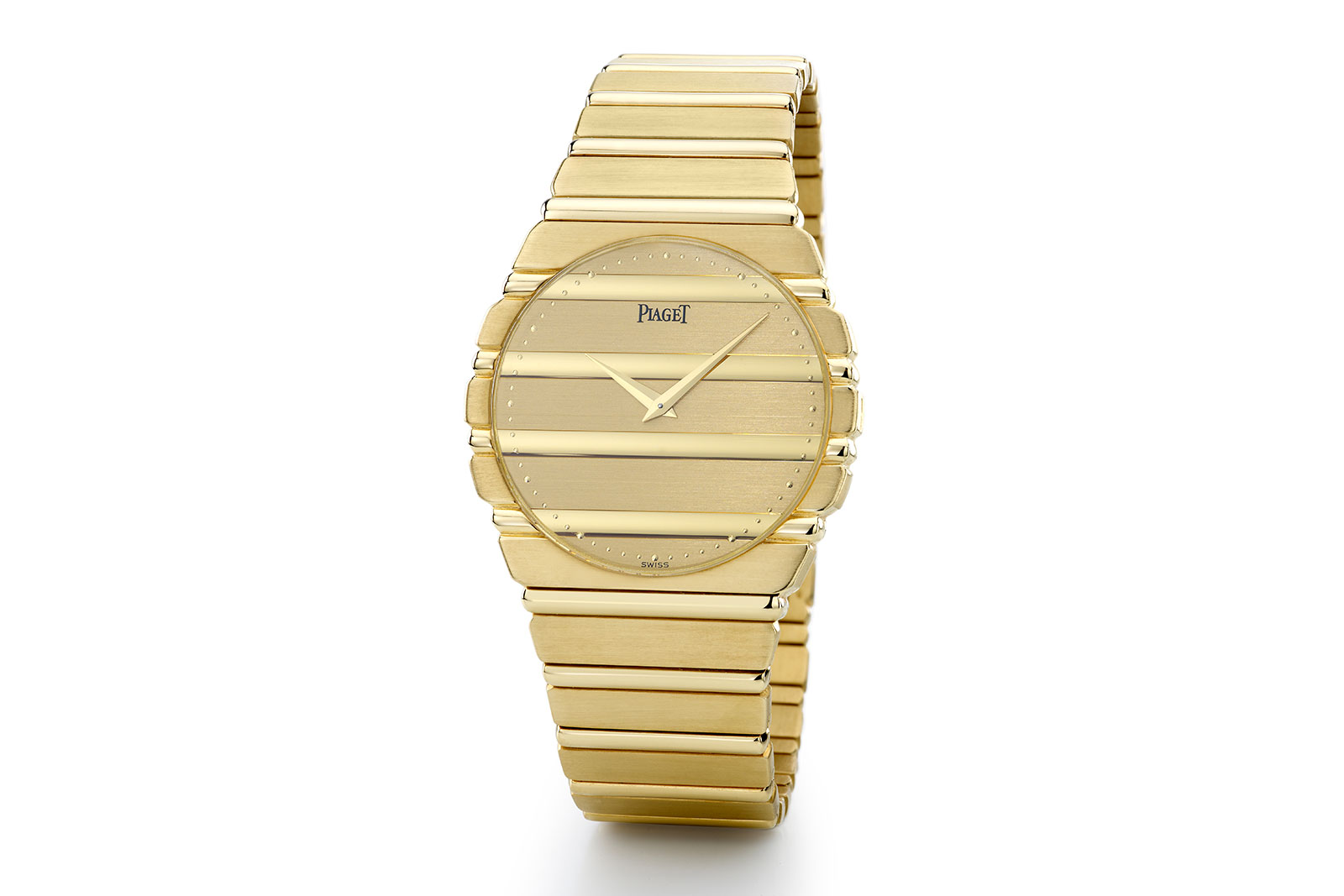
The original Polo ref. 7761 C701 of 1979. Image – Piaget
Piaget wisely decided to remake the 1979 original, which was slightly smaller and quartz. Today’s Polo 79 is a good size for the design at 38 mm wide and under 7.5 mm high. The dimensions give it a retro feel without being too small, while the all-gold construction gives it a good weight in hand. Incidentally, its measurements are also nearly identical to that of the Vacheron Constantin 222.
Although the Polo 79 is a thin watch by any standard, the vertical case sides and lack of a bezel make it seem slightly thicker than it is. The proportions are good for a modern sports watch, though they don’t quite match the extreme thinness of the original.
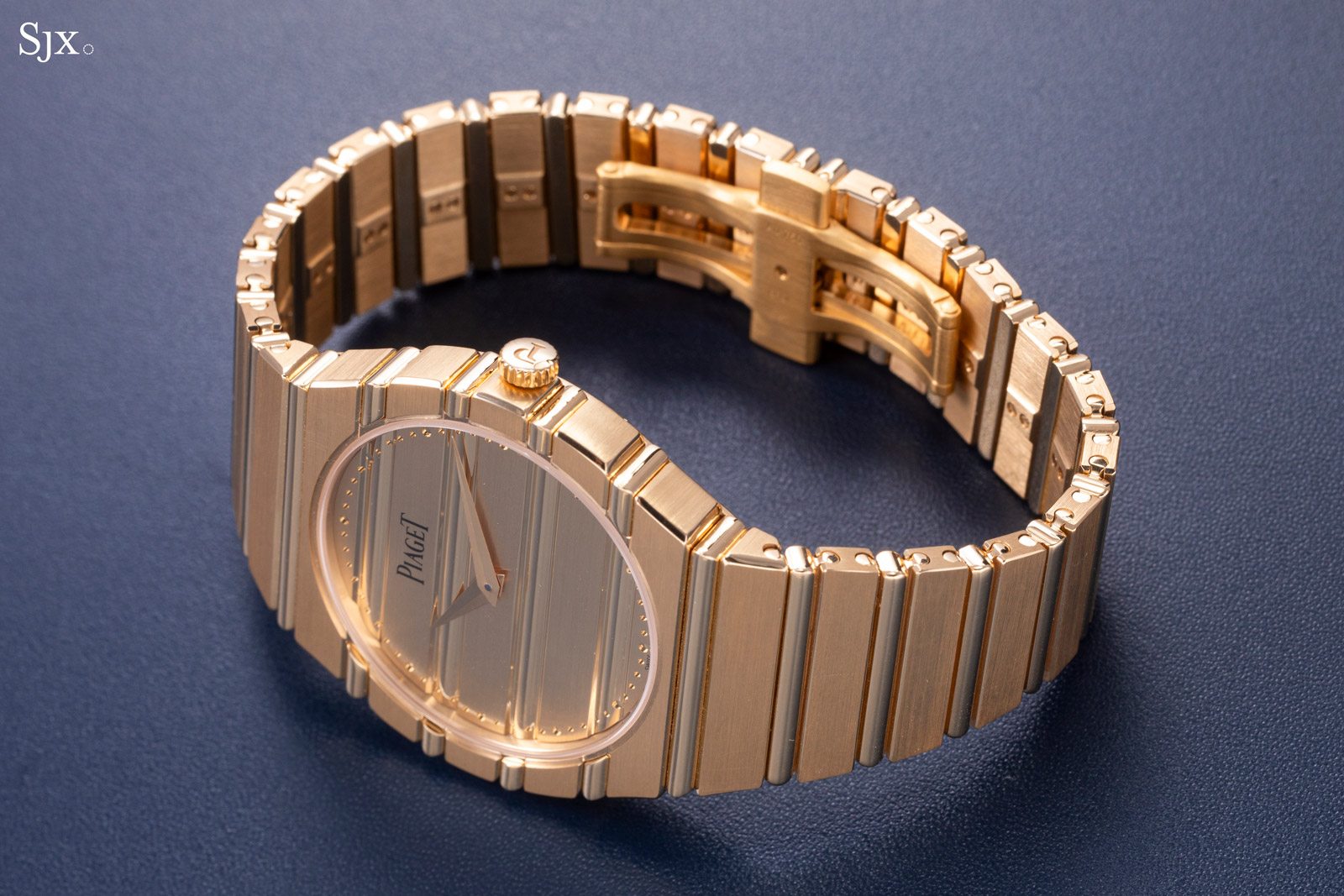
Though the case preserves the design of the original, it is built entirely differently. The vintage Polo had a one-piece case that was cast, whereas today’s model has a case middle with slotted flanks to accommodate the polished gadroons.
It’s a fairly complex construction that was presumably employed in order to perfect the finish of each component. This approach allows each gadroon to be polished individually, while also allowing for the case middle to be brushed on its flat surfaces and mirror polished on its chamfers.
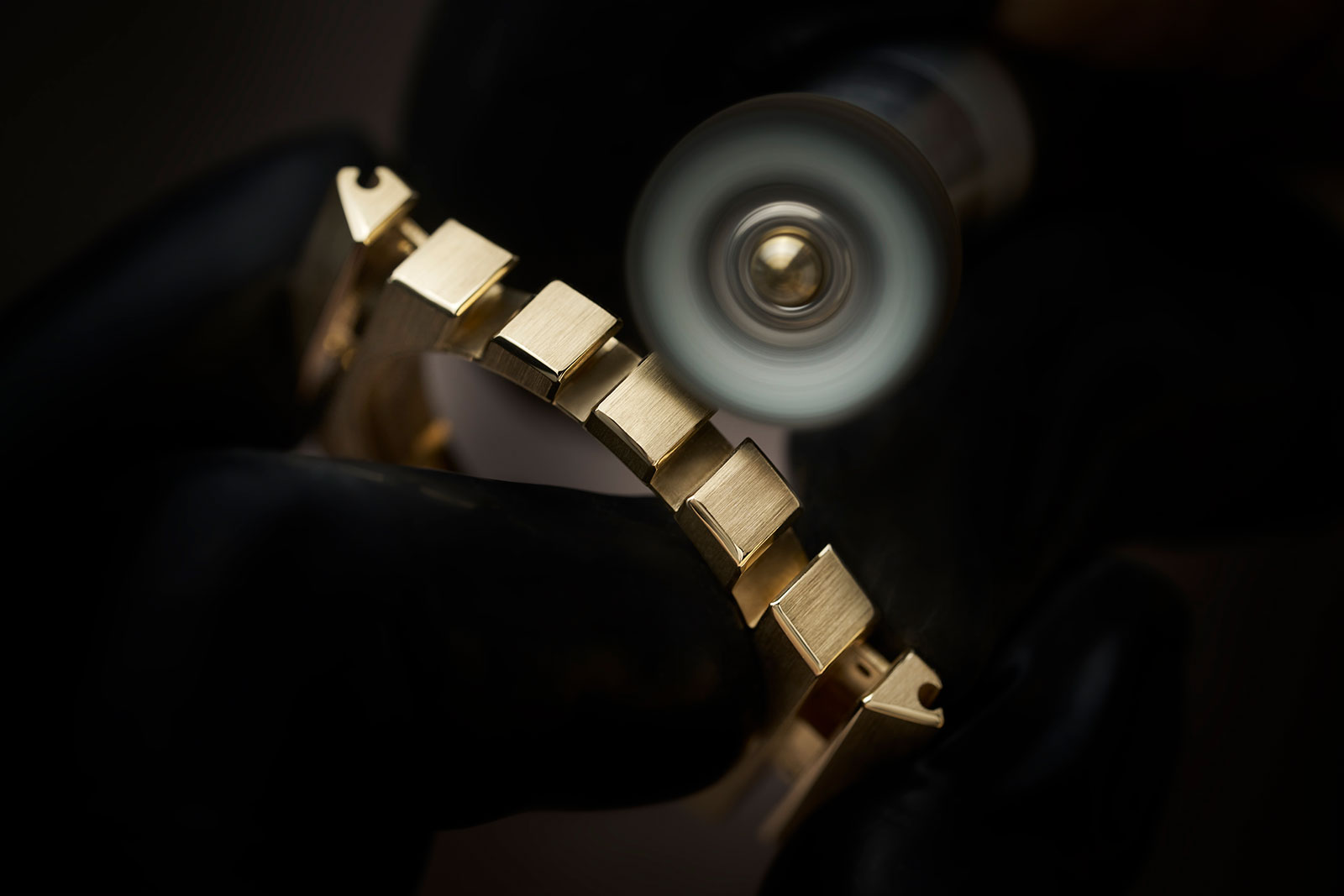
The case without gadroons. Image – Piaget
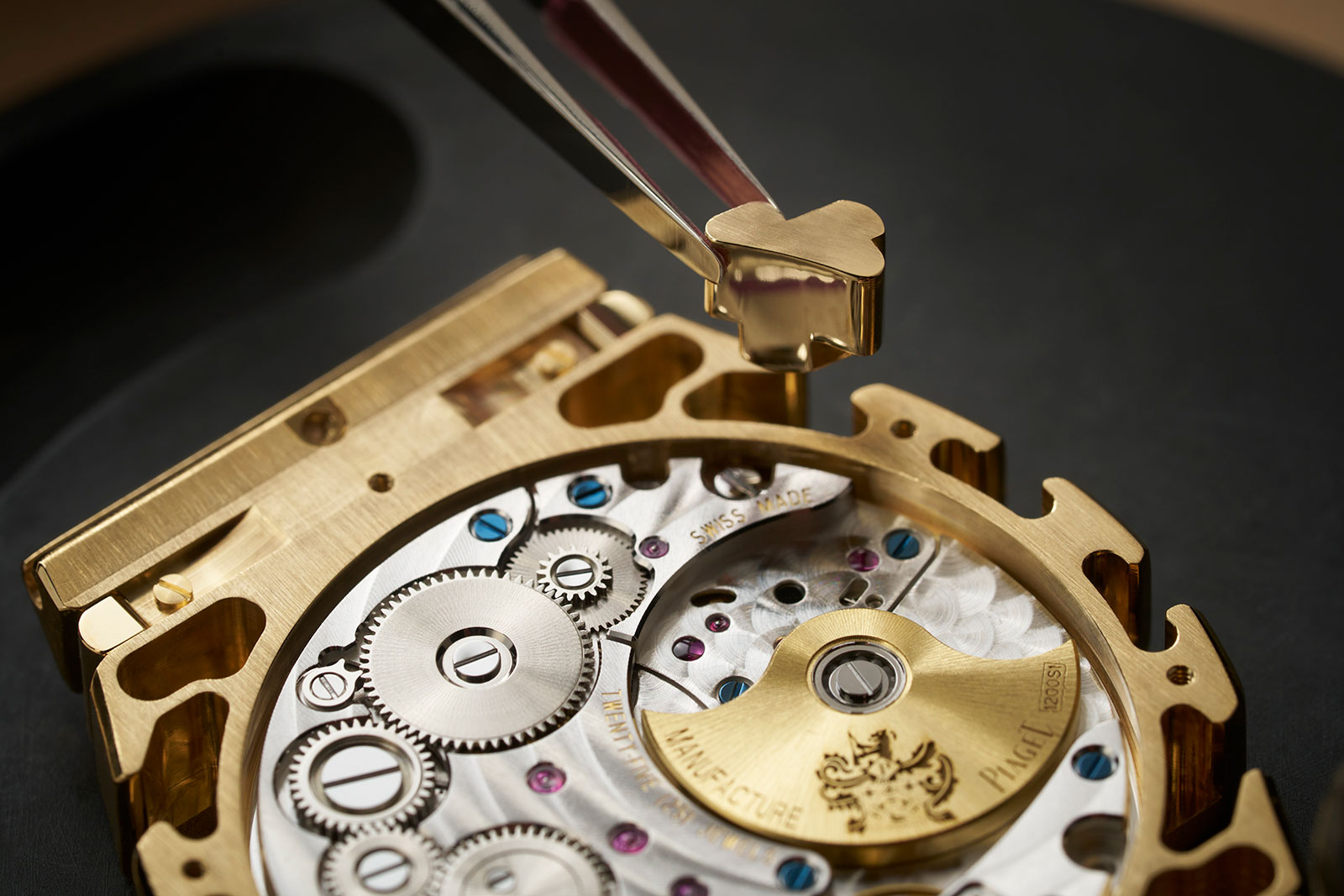
The multi-part construction brings with it superior finishing, but it does result in visible borders between the case and gadroons. This is only apparent up close, and a worthwhile compromise for the detailed finishing on the case that would not have been the same if it had been constructed as a single piece.
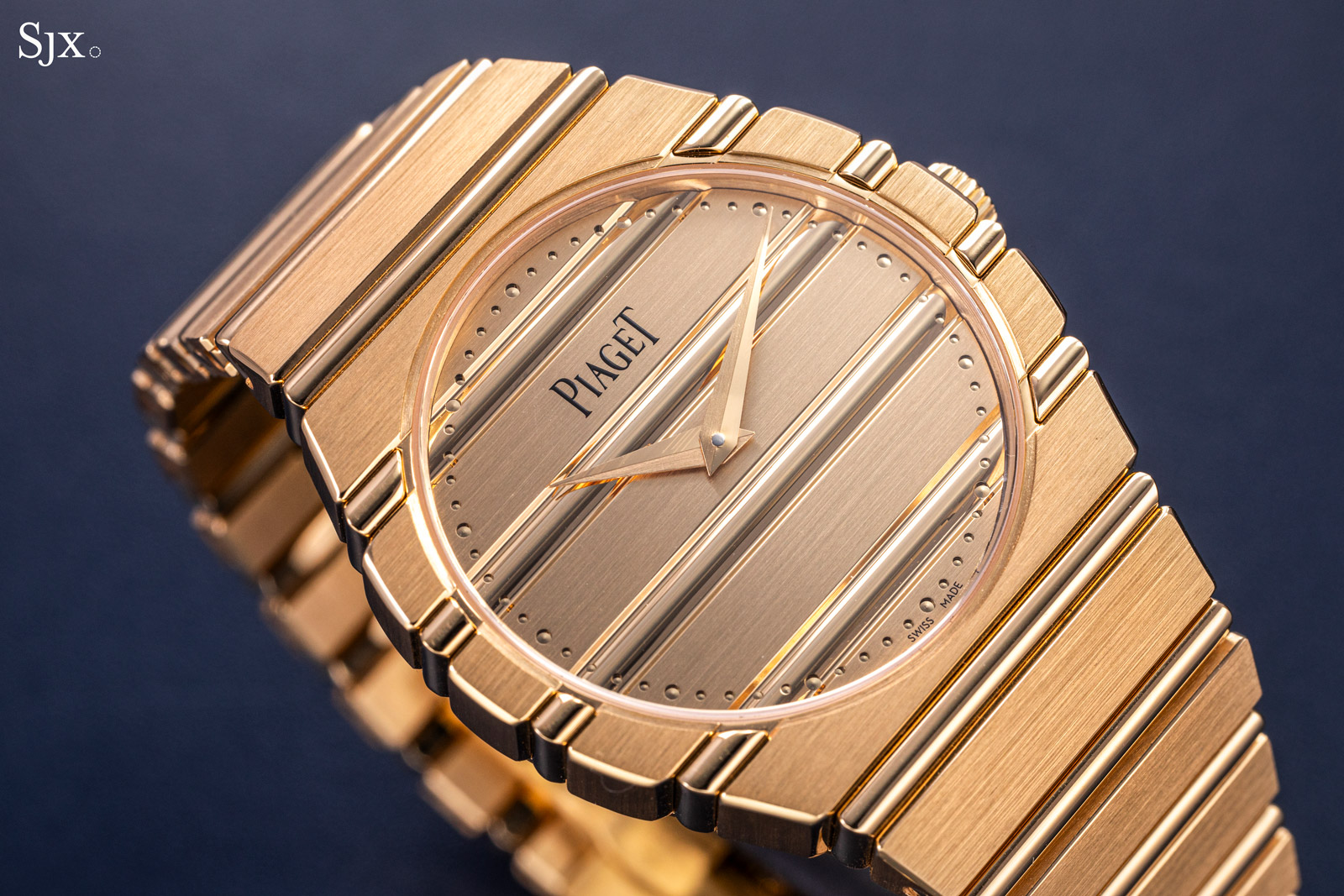
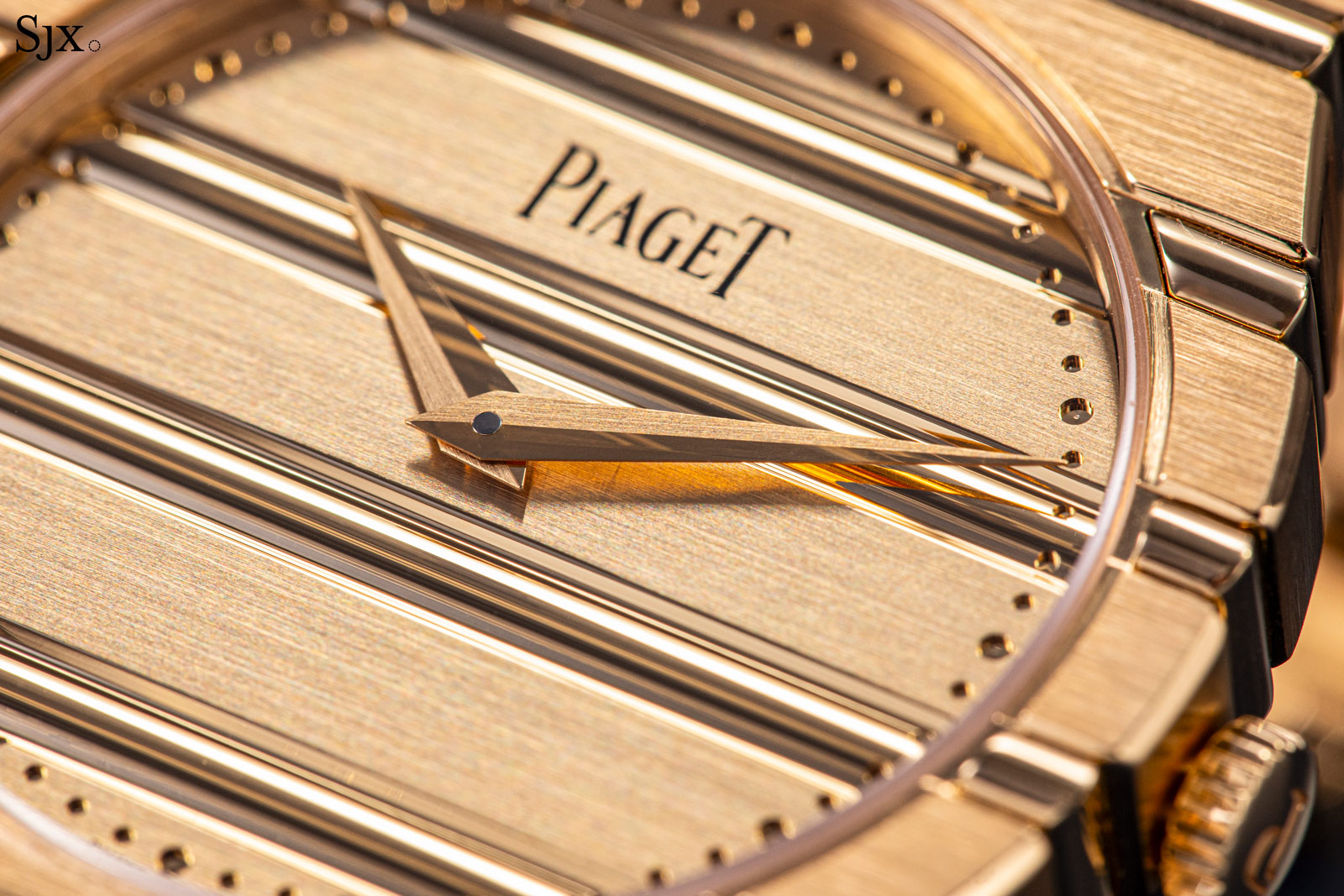
As is often the case with sports watches of this type, the bracelet is an integral part of the case – no pun intended. The original Polo had an unbroken banded motif continuing across the dial, case, and bracelet. The Polo 79 naturally does the same, but as it is with the case, the bracelet has an upgraded construction.
Each link slots into its neighbour and is secured by screws on the back, in a set-up reminiscent of the Chopard Alpine Eagle. The result is a bracelet that is supple enough to be comfortable, but stiff enough the watch can stand upright on a desk.
The bracelet is missing two things, however. One would be odd-sized links (“0.75” or “1.5” links for instance) for a better fit, and another would be a more sophisticated clasp that incorporates a quick-adjustment mechanism, a convenient feature that is now common, even in inexpensive watches.
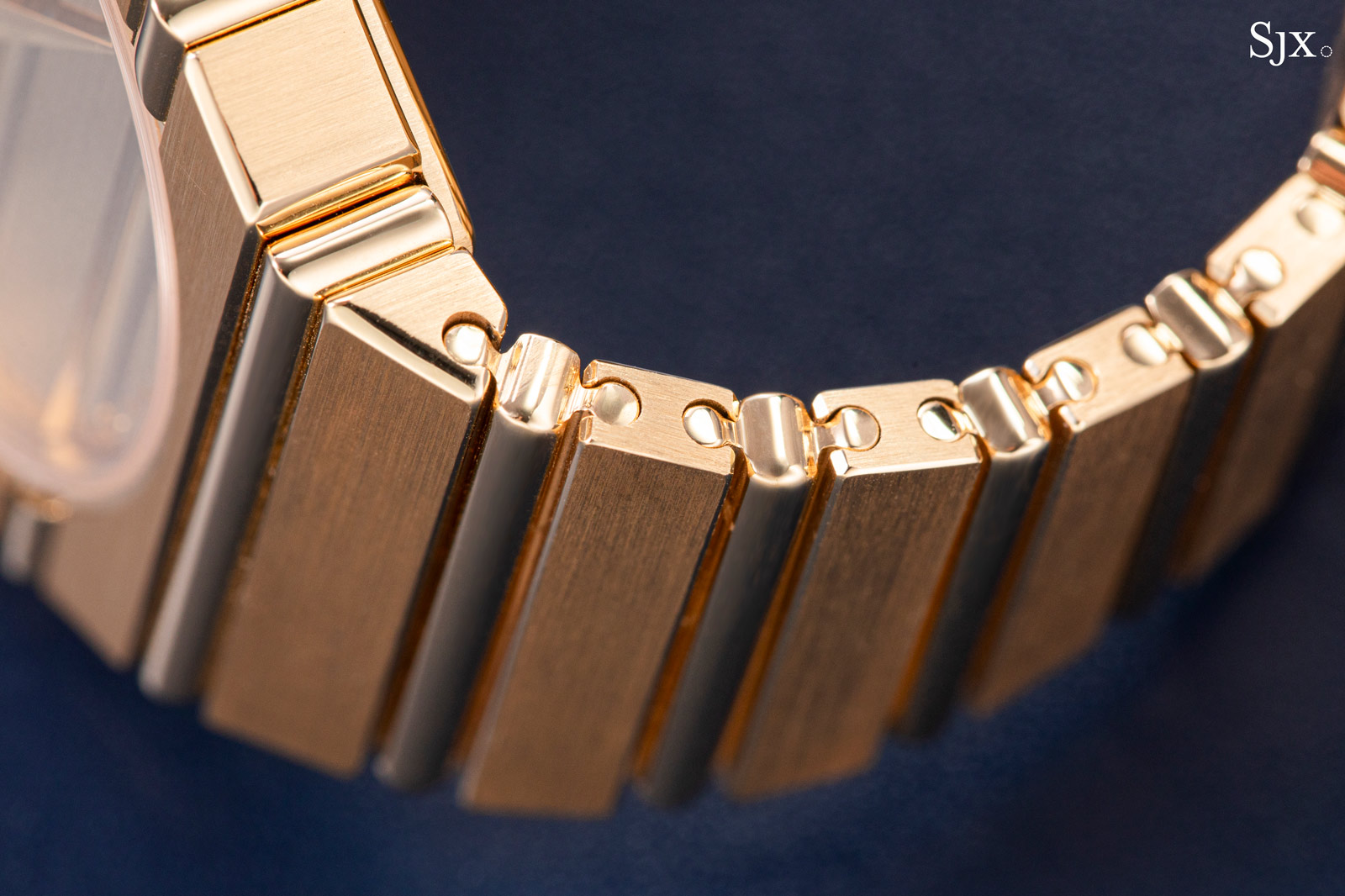
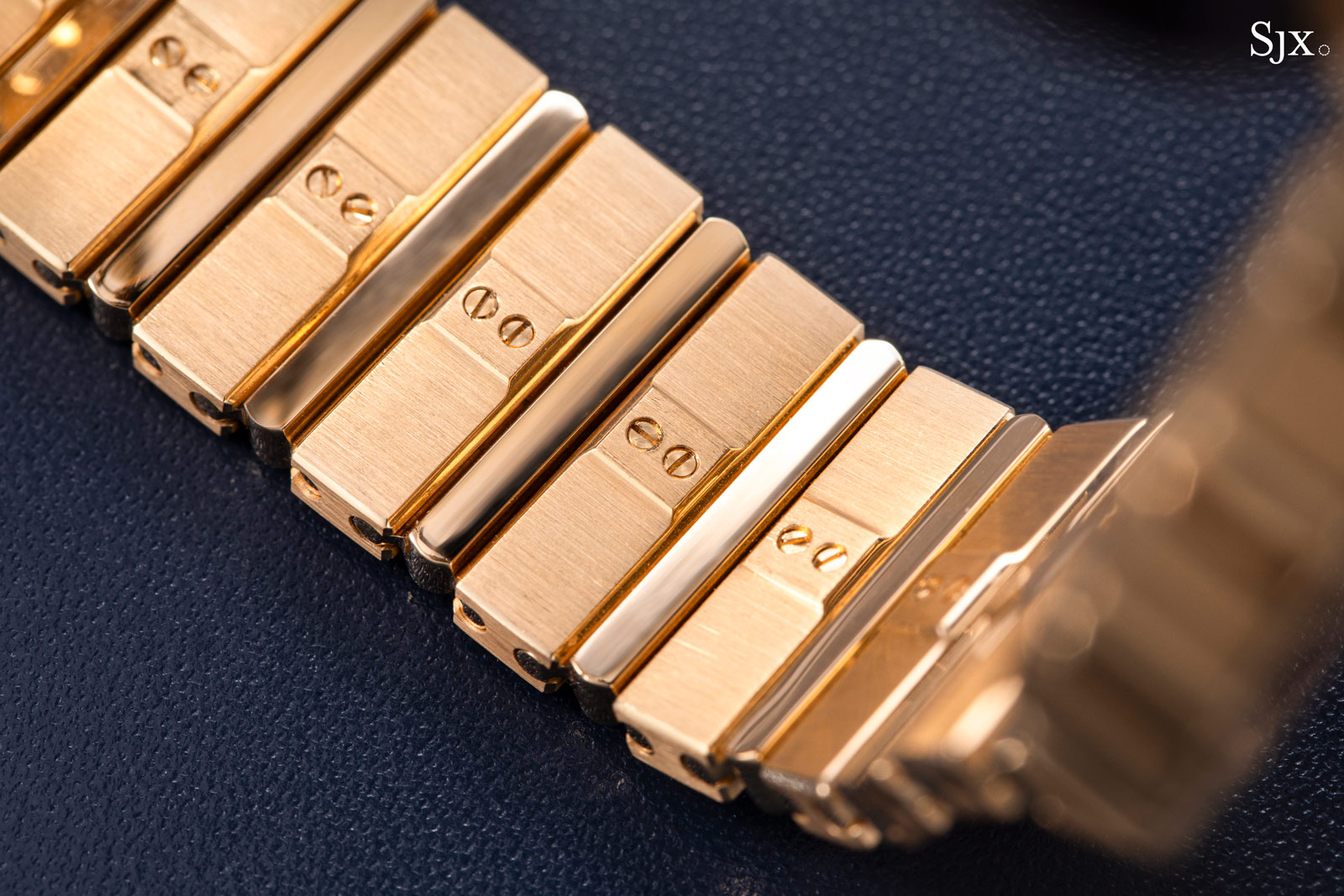
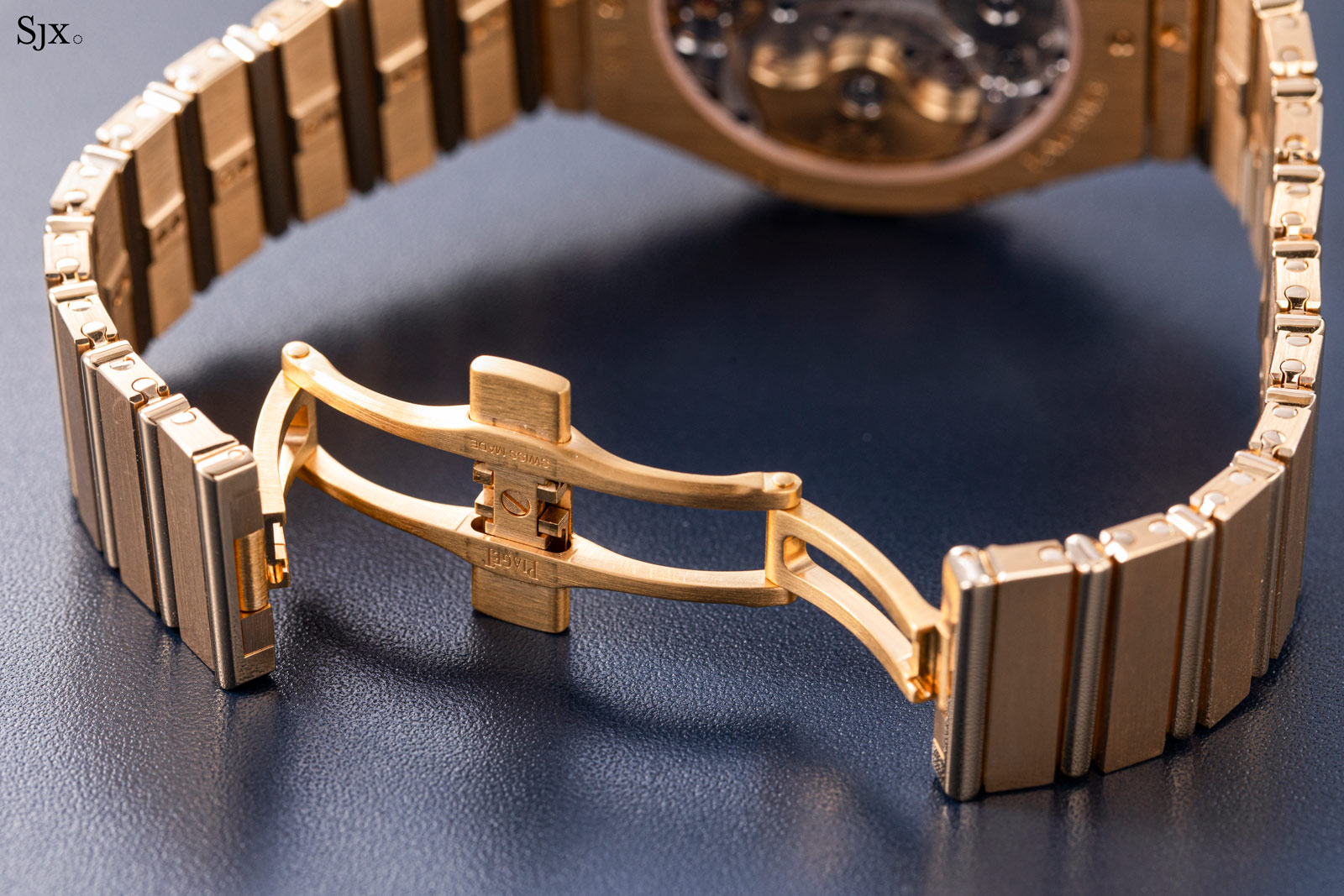
Echoing the evolution of the case, the dial has the design of the original, but with larger hands and a much larger logo. The enlarged hands make sense for legibility; for the same reason they sport a two-tone finish of brushing and mirror polishing. The emblem under 12 o’clock, however, would probably do better in a smaller size.
Up close, the dial show a high level of execution. It’s a disc of solid 18k yellow gold with a one piece construction with engraved dots for the minute track. The pattern is presumably milled before the dial is finished with brushing and printing.
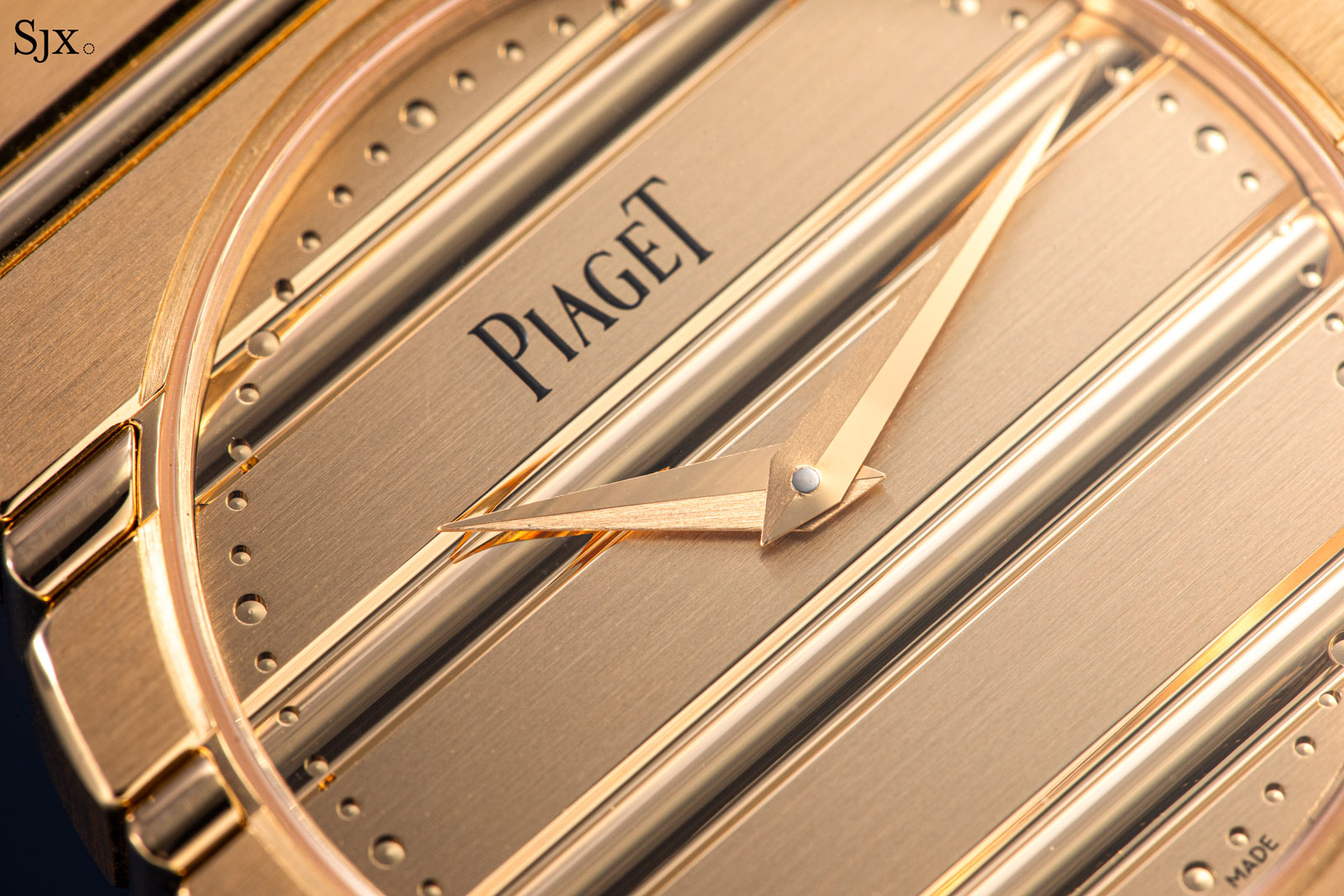
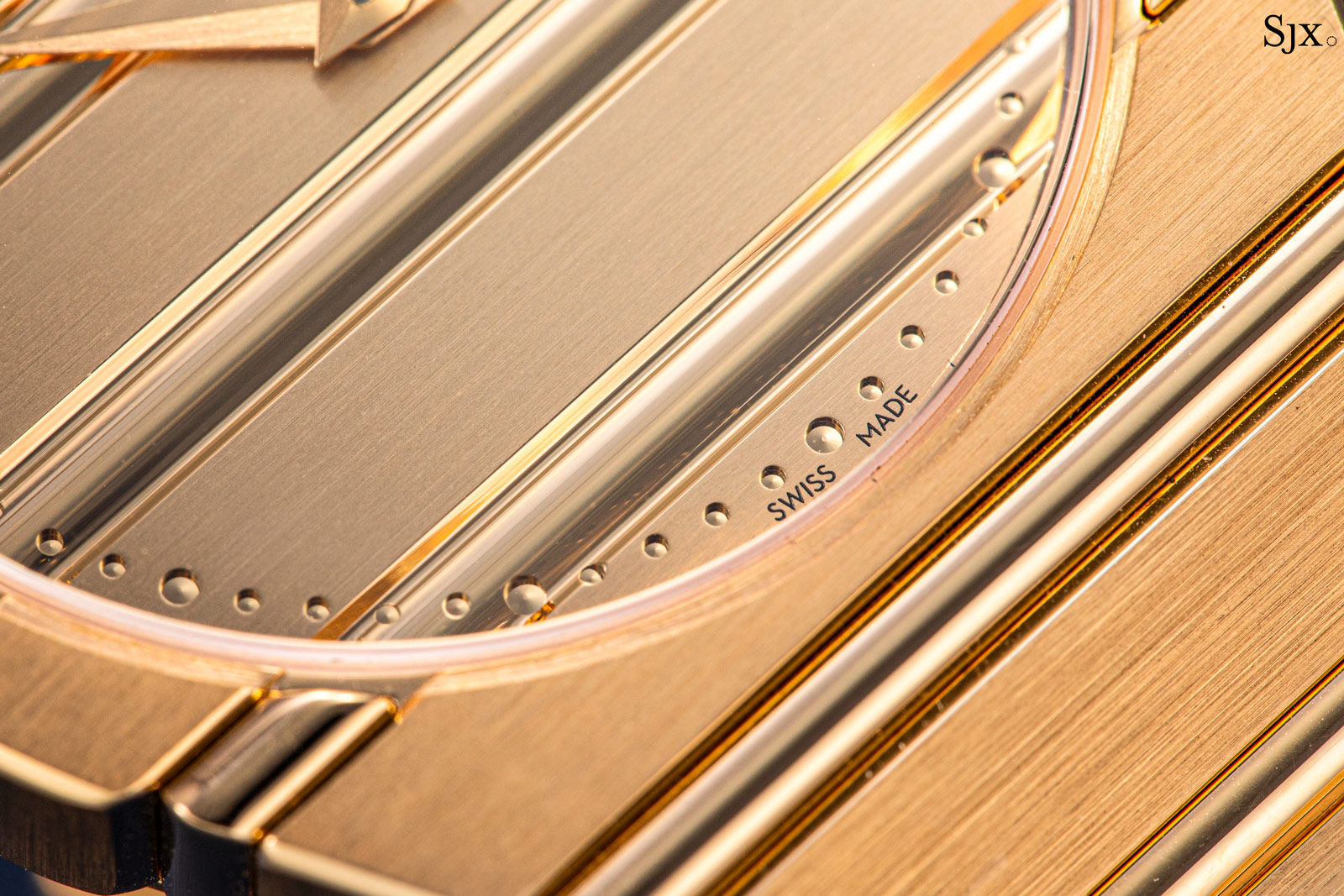
The Polo 79 is powered by the cal. 1200P1, a variant of the workhorse calibre found in a variety of Piaget watches, ranging from the Polo Skeleton to many Altiplano dress watches (and even a pocket watch). Standing an impressive 2.35 mm high, the cal. 1200 was the thinnest self-winding movement in the world at the time of its launch in 2010 (a record since broken by Piaget and other brands).
It is a very, very thin movement even today. In comparison, the Audemars Piguet cal. 7121 found in the Royal Oak “Jumbo” ref. 16202 is 3.2 mm high.
The cal. 1200 is thin thanks to a micro-rotor and a relatively small barrel, explaining the 44-hour power reserve. That’s short by modern standards, but acceptable considering the slimness of the movement.
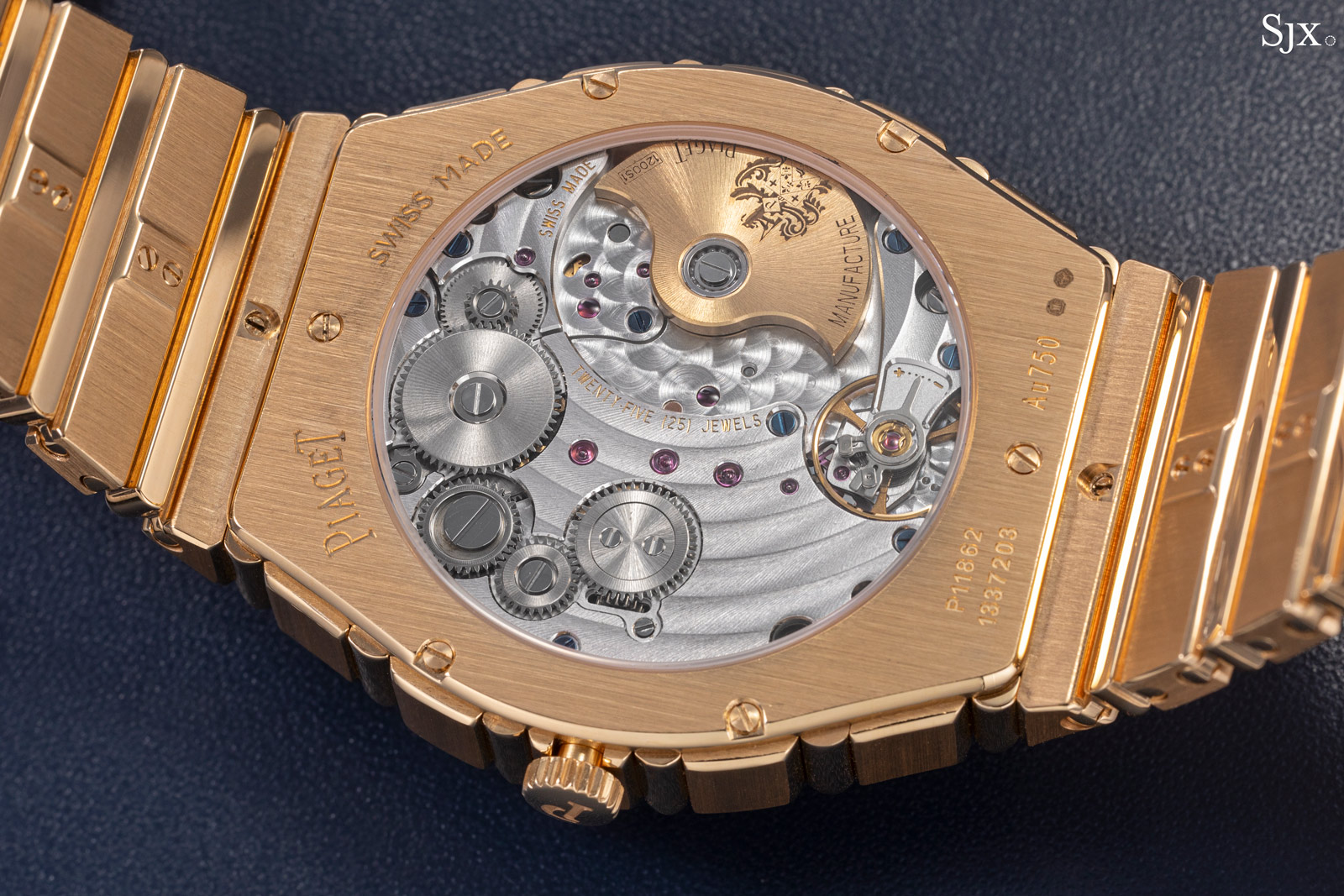
The decoration of the movement is typical of Piaget, namely high-quality industrial finishing. Bridges are striped, screws are blued, and wheels are grained, resulting in an attractive aesthetic. The Etachron regulator index, however, looks inexpensive compared to the rest of the movement (though that might be because the watch shown is a prototype, as the cal. 1200 is often seen with another style of regulator).
Overall, the finish and quality of the movement are excellent. The closest comparisons would be Jaeger-LeCoultre and IWC, but not Vacheron Constantin, the key reason the Polo 79 feels expensive compared to alternatives.
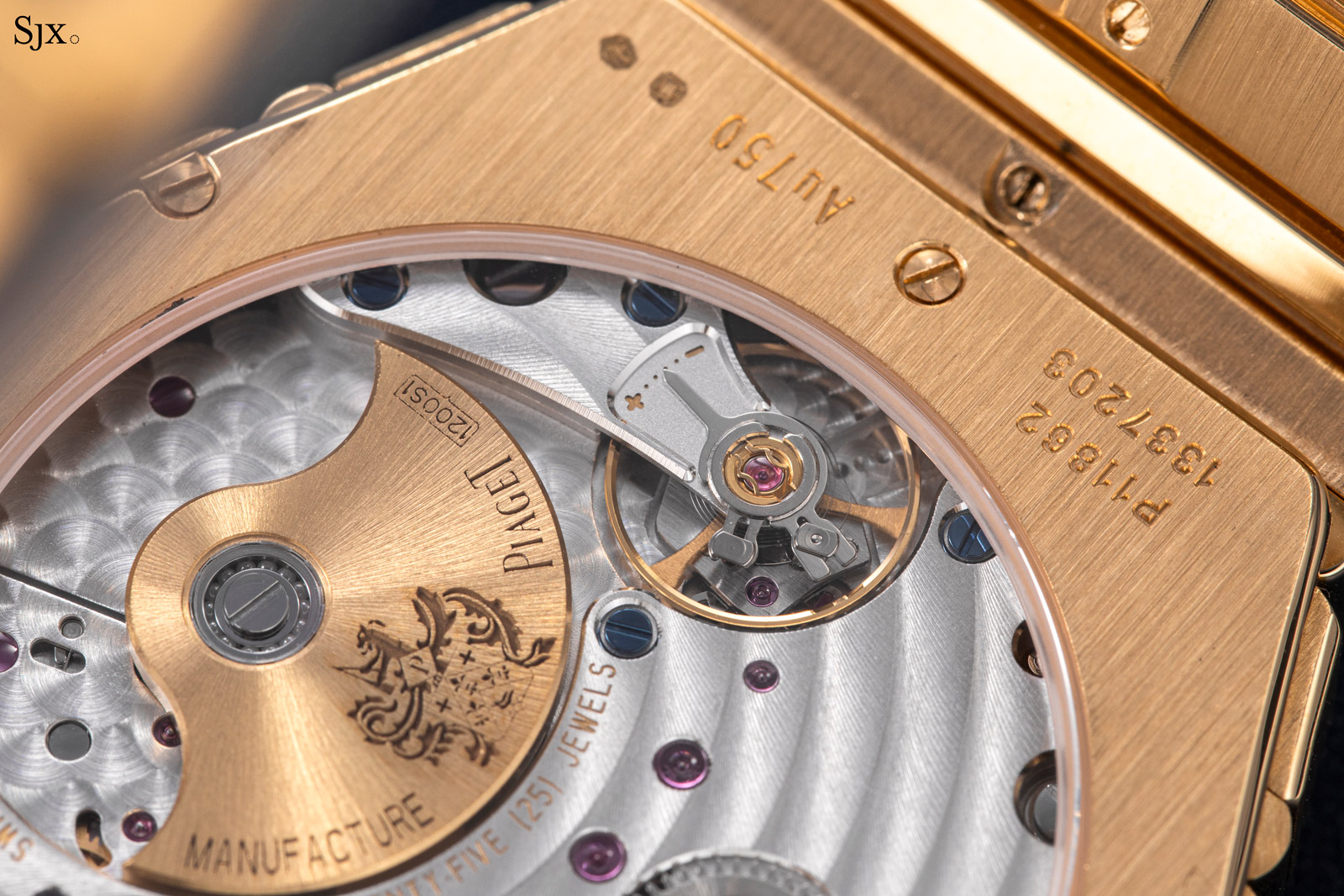
Concluding thoughts
In tangible terms, the Polo 79 is done well. On the exterior, the case, bracelet, and dial show a high level of fit and finish that certainly exceeds that of the original. Mechanically, the cal. 1200 is typical Piaget – impressively thin and smartly constructed. Despite its merits, the Polo 79 is too expensive, a fact that is made more obvious by the price of the Vacheron Constantin 222.
Key facts and price
Diameter: 38 mm
Height: 7.45 mm
Material: 18k yellow gold
Crystal: Sapphire
Water resistance: 50 m
Movement: Cal. 1200P1
Functions: Hours and minutes
Winding: Automatic
Frequency: 21,600 beats per hour (3 Hz)
Power reserve: 44 hours
Strap: 18k yellow gold bracelet
Limited edition: No
Availability: Starting September 2024
Price: CHF68,500, or 106,000 Singapore dollars
For more, visit Piaget.com.
Back to top.


